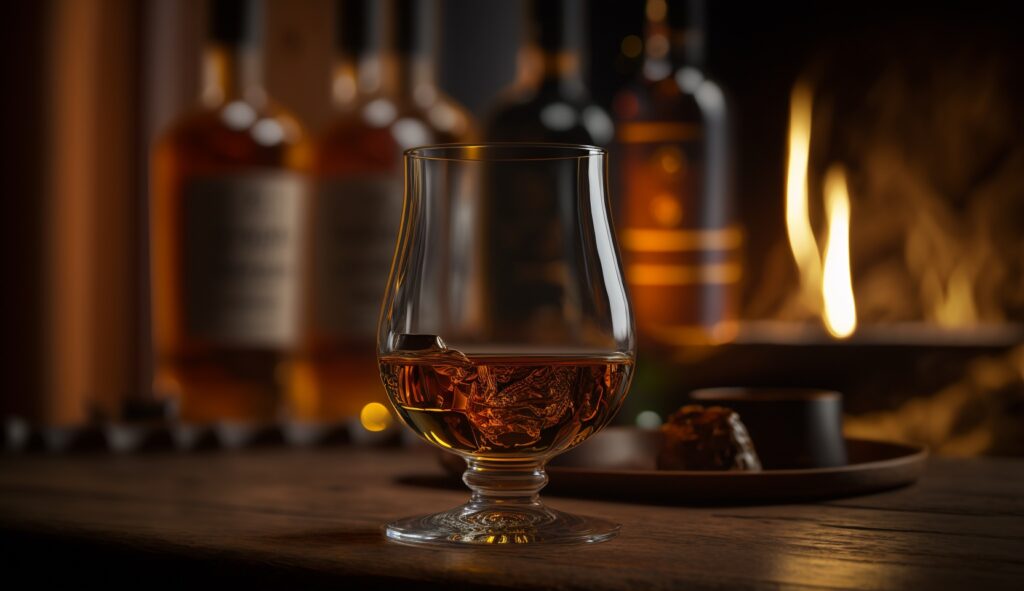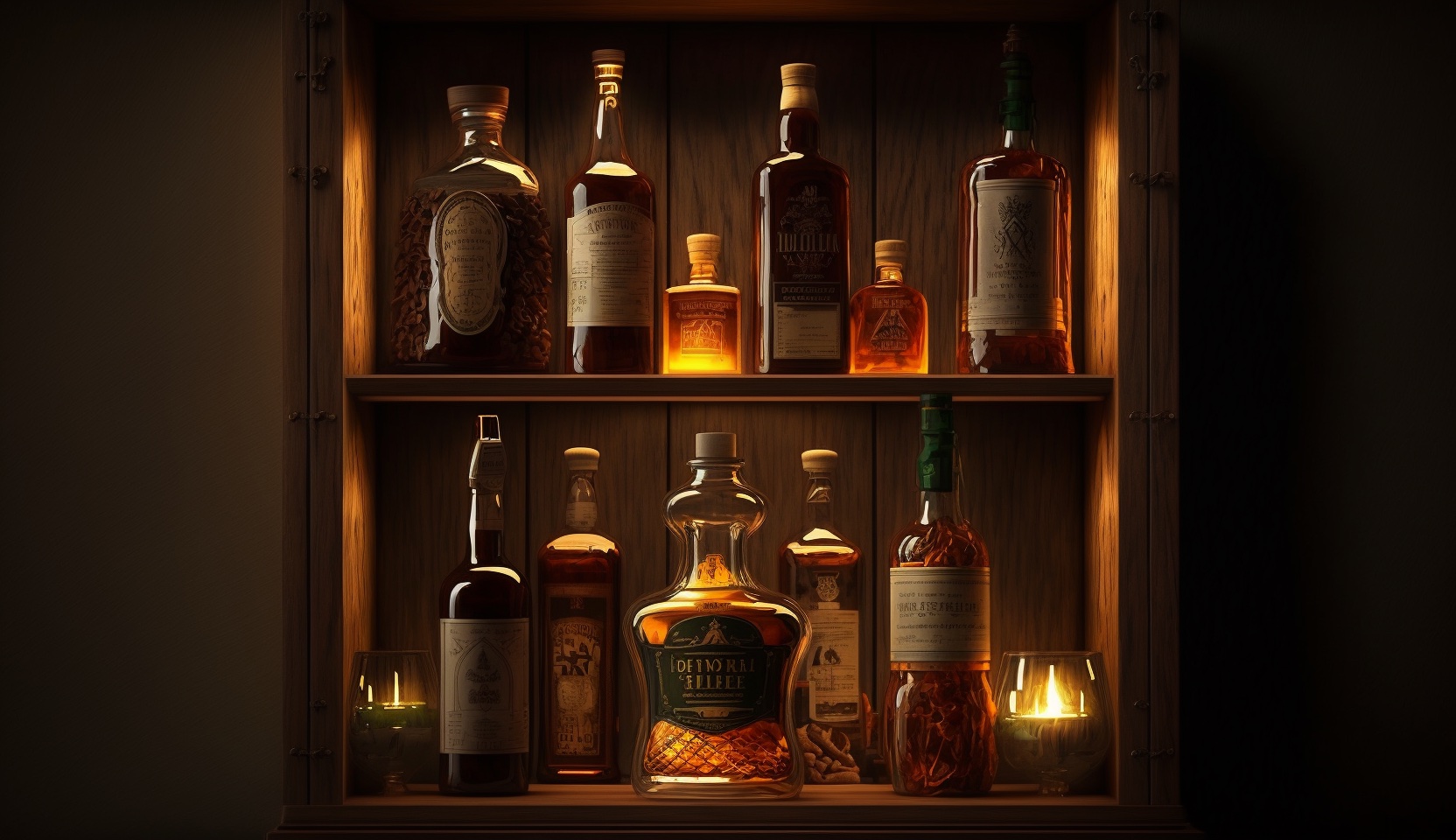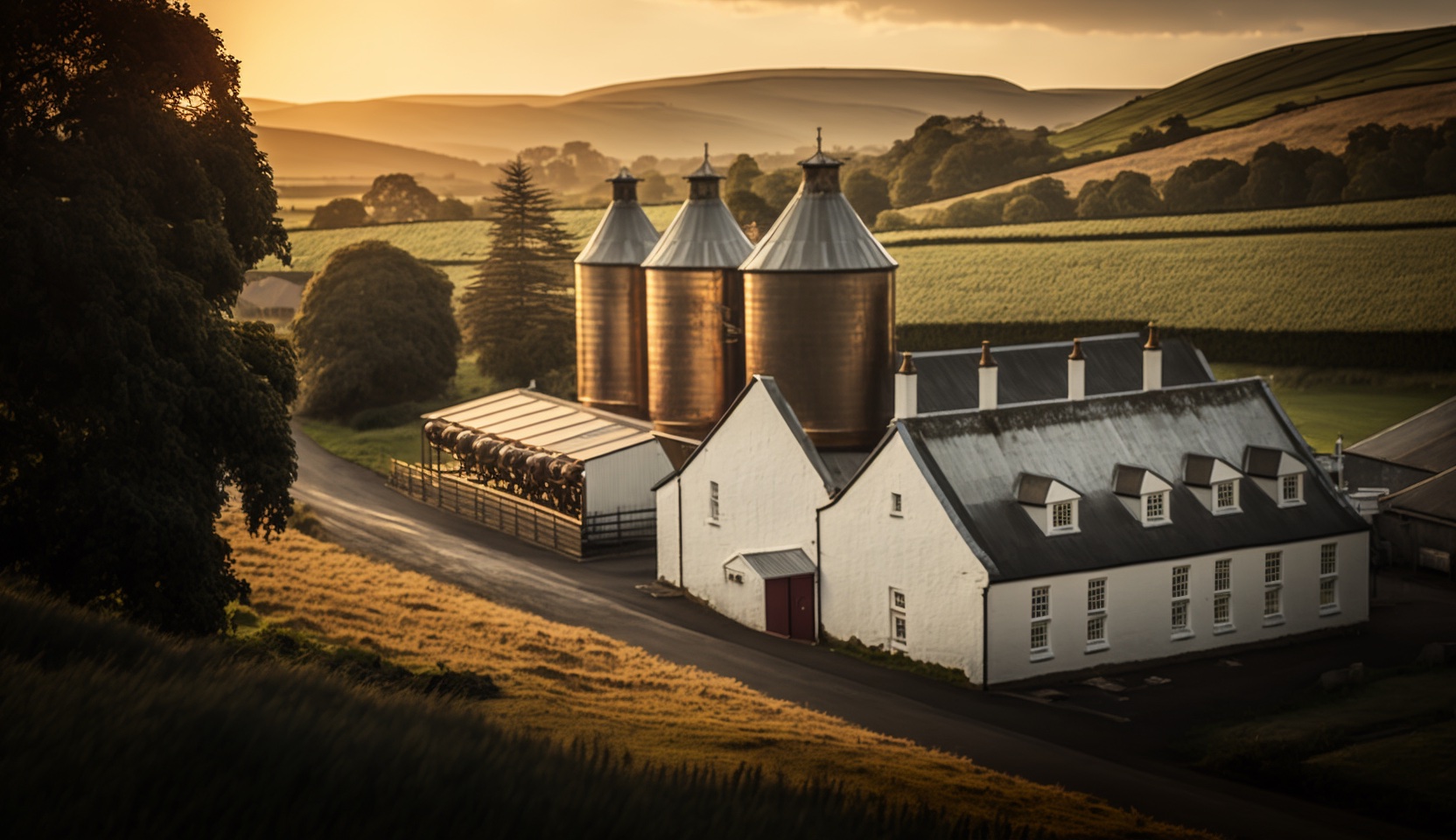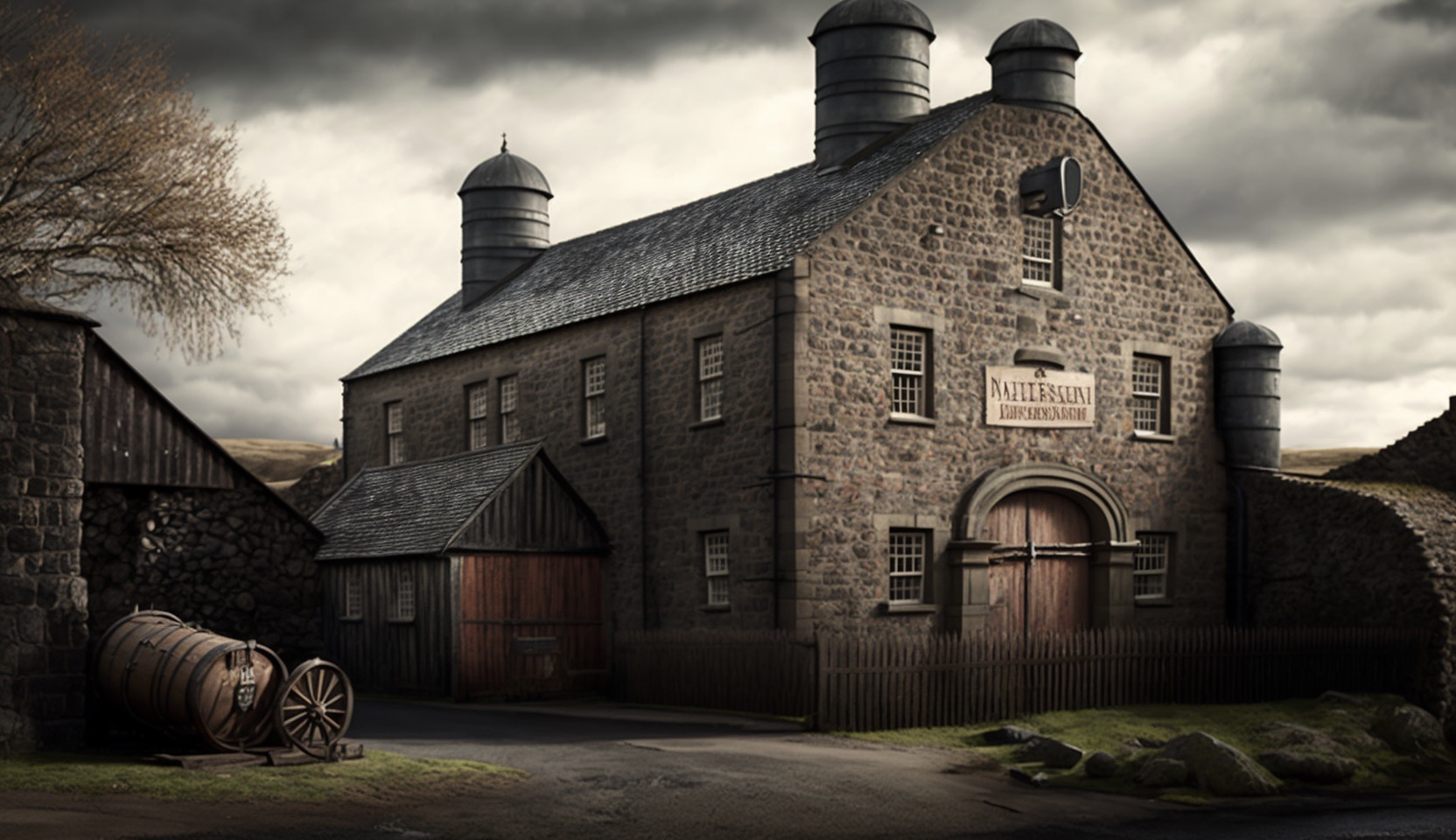The Ultimate Guide to Single Malt Scotch
There’s no denying the appeal of a single malt scotch. With its complex flavours and rich history, it’s one of the world’s most beloved drinks. But when it comes to choosing the right bottle, things can get complicated – there are so many factors to consider! That’s why we’ve created The Ultimate Guide to Single Malt Scotch: History, Flavours, and Distilleries.
This comprehensive guide will help you find your perfect dram with ease. We’ll take you through the centuries-old tradition that makes this drink so special, as well as exploring some of its unique flavours and regional distilleries. So if you’re ready to explore this fascinating spirit in greater detail, grab yourself a glass and let’s dive in!
The Origins Of Single Malt Scotch: A Brief History
Single malt scotch has a long and storied history that dates back centuries. In the whisky world, single malt refers to whisky made from malted barley at a single distillery, giving it its own character.
It’s believed that the first recorded reference to whisky in Scotland was by Friar John Cor of Lindores Abbey near Newburgh in 1494 who wrote about receiving eight bolls of malt for making ‘aqua vitae’. Single Malt Scotch then grew in popularity as demand increased throughout Europe and abroad.
By the late 18th century there were over 1,000 distilleries operating across Scotland with an estimated 8 million gallons being produced annually by 1800 – more than 3 times what is currently distilled per year!
Today, single malt scotch remains one of the most popular spirits around the globe, enjoyed for its unique flavour profile and craftsmanship. With such a rich heritage behind it, let us now explore how this spirit is created from beginning to end.
The Making Of Single Malt Scotch: From Malted Barley To Bottling
The making of single malt scotch is a process that has been perfected over hundreds of years, but at its core it involves something very simple; malted barley. This grain, which has been germinated and then dried by hot air in the ‘malting’ process, provides the sugar to fuel fermentation and ultimately create whisky’s distinct flavour. The grains are mashed with water to extract their sugars before being fermented during an aerobic process for about two days – this creates the beer-like liquid known as ‘wash’.
This wash is then twice distilled through copper pot stills to refine the alcohol content and bring out flavours such as fruitiness (from esters) and smokiness (from phenols). After distillation comes maturation where, depending on the desired outcome, casks made from oak or other wood types can be used to impart further flavours into the spirit. It’s not until bottling that single malt Scotch reaches its full potential, ready to be sold along with over a billion bottles of whisky that are produced each year worldwide!
Exploring The Different Regions Of Single Malt Scotch: Geography And Climate
Single malt scotch whisky is a complex and varied drink. It has been made in Scotland for centuries, using different methods and ingredients depending on the region it hails from. Each area of Scotland produces single malts with distinct flavours, aromas, and personalities which can be attributed to its geography and climate conditions.
To understand the differences between each Scotch-producing region, let’s explore some of the most popular areas:
The Highlands:
This vast expanse spans from Inverness in the north to Glasgow in the south. With its rolling hills and lochs, this area boasts an incredible diversity when it comes to single malt whiskies. From full-bodied smoky drams to light floral varieties, there’s something for everyone here!
Speyside:
Running along the River Spey in Moray, Speyside is home to more than half of all malt whisky distilleries in Scotland – making it one of the most important regions when it comes to producing these delicious spirits. These whiskies are known for their smoothness and subtle complexity – perfect if you’re new to trying scotch whiskies!
Islay:
Located off Scotland’s west coast lies Islay – a rugged island famed for its peaty, smoky malts that make up some of the world’s best loved single malts. If you’re looking for something strong with lots of character, then look no further than Islay!
From coastal climates to highland landscapes; each geographical area brings something unique to single malt scotch whisky production – but what about the process itself? We’ll delve deeper into how distillation plays an integral role in creating amazing flavour profiles next…
The Importance Of The Distillation Process In Single Malt Scotch: Impact On Flavor
The distillation process of single malt scotch is just as important to its flavour as the region and climate where it’s made. Single malt whisky must be created from malted barley at a single distillery, and barrels used for ageing must be made from American oak casks that are at least three years old. This contributes heavily to the unique taste profile associated with each individual brand or style of scotch. The goal is to produce a smooth, full-bodied spirit that will mature into an exquisite sipping experience.
Additionally, special releases may use grain whiskies in their production which add complexity and depth to the overall flavour profile. These whiskeys are extremely rare and sought after by connoisseurs who appreciate distinct flavours not found elsewhere. While these grains can provide exceptional tasting notes, they do nothing to alter the character imparted by the wood during maturation. Therefore, careful consideration should be given when selecting barrel types and ages for this purpose.
The intricacies of single malt distillation play an integral role in developing the scotch’s unmistakable flavour characteristics – something we’ll explore further by delving into the role of peat in single malt scotch next.
The Role Of Peat In Single Malt Scotch
Peat is a vital part of Scotland’s whisky-making process and an integral component of single malt scotch. The heat generated by burning peat fires during the malting stage has been used to dry barley since the 14th century, and this method remains largely unchanged today. As such, each distillery will produce a unique flavour profile depending on where they source their peat from, with Highland Park drawing its supply from Orkney and Loch Lomond sourcing theirs from near their namesake loch. Caol Ila uses Islay’s abundant resources for its smoky flavour, which gives it that distinct taste.
The use of smoke in whisky production produces all manner of flavours depending on how heavily peated the malt whiskies are – from light and sweet notes found in lightly peated spirits, to powerfully intense tastes produced by intensely smoked varieties. Peat adds complexity to any Scotch whisky regardless of whether you prefer a lighter or more robust dram. This range of flavours makes single malt scotch ever so versatile when crafting cocktails or enjoying neat as well as providing endless opportunities for exploration and discovery for connoisseurs around the world. With these characteristics in mind, let us now explore the delightful aromas, tasting notes, and characteristics associated with single malt scotch.
Single Malt Scotch Flavours: Aromas, Tasting Notes, And Characteristics
Single malt scotch is known for its distinct flavours, aromas and characteristics. These vary from distillery to distillery and can be affected by a range of factors such as cask type, age statement, time spent in the cask, water source used and even the yeast strain. Royal Brackla, one of Scotland’s oldest distilleries, produces single malt Scotch with full-bodied fruit flavours surrounded by hints of honey and vanilla. Different styles of whisky have different tasting notes that you should look out for when sampling a dram. The most common include sweet fruits like melon or citrus, along with floral and nutty notes. Smoky peatiness is also often present —this comes from malted barley being dried over burning peat fires before fermentation. Furthermore, some whiskies may display tastes of caramel or butterscotch due to the presence of natural sugars found within the grain used during production. All these unique elements combine together to create an unforgettable drinking experience—one which no other spirit can quite replicate!
Difference Between Blended And Single Malt Scotches
Single malt scotch is one of the most beloved spirits in the world. What differentiates it from blended scotches, however? Single malts are a pure form of whisky made by distilling only one type of grain mash at an individual distillery, while blended whiskies incorporate multiple single-grain whiskies from several different distilleries. Here’s how they compare:
1. Flavours: Blended Scotch tends to have more complex flavours due to its blend of grains and ages, while single malt scotch has a unique flavour that comes solely from its own distillery with no added ingredients.
2. Price: Because blended scotch uses multiple types of whisky, it can be significantly cheaper than single malt scotch which relies on just one source for all its producing needs.
3. Production Process: While both processes involve fermentation and maturation stages, blending involves mixing together various batches into one final batch before bottling whereas single malt does not require any blending whatsoever.
The differences between these two styles should help you decide which kind best suits your taste buds – whether it’s the complexity and affordability of the blended or the distinctive flavour of a single malt! Now let’s move onto how to store and serve this wonderful spirit for maximum enjoyment!
How To Store And Serve Single Malt Scotch: Tips And Tricks
Having a basic understanding of the difference between blended and single malt Scotches sets you up for success when it comes to storing and serving your favourite spirit. To ensure that your whisky retains its character and flavour, there are several key steps you should take.
First, store your bottle in an upright position at room temperature away from direct sunlight or heat sources. This will prevent oxidation which can lead to evaporation and spoilage of the liquid. Additionally, be sure to keep the cork tightly sealed in order to maintain its freshness; over time, exposure to air will cause flavours to dissipate. Finally, if you choose to decant the whisky into another container before serving, do so with care as any contaminants introduced during this process could negatively impact its taste.
When it’s time to pour your Scotch, remember that one ounce is about all you need for a glassful—any more than that may interfere with your ability to truly savour each sip! Opt for a tulip-shaped glass as this allows aromas to concentrate near the top while allowing them to disperse further down towards the nose. Most importantly though, sit back and enjoy every drop knowing that you have taken great care in selecting and preserving it properly! From here we turn our attention towards exploring the art of maturation: how age and barrels influence flavour.

The Art Of Maturation: How Age And Barrels Influence Flavour
It’s a well-known fact that age is an important factor in developing single malt scotch. The longer the whisky matures, the more complex its flavour becomes. But what many people don’t know is how maturation works and how it affects the flavour of their favourite spirit.
The art of maturation includes two main components: ageing and barrel selection. Here’s how they work together to create unique flavours:
Ageing:
* Ageing brings out complexity and depth in the spirit as the molecules interact with oxygen over time. It also adds colour, mellows out harsh tastes, and enhances smoky or peaty notes.
* Different types of wood barrels are used for ageing—oak being the most popular option—each imparting its own characteristics on the whisky during this process.
Barrel Selection:
* Choosing which type of barrel to use can impact not only the taste but also aromas, texture, mouthfeel, and finish.
* Distillers have many decisions to make when selecting a barrel; size, origin (American/European oak), charring level, etc., all play a role in creating distinctive flavours for each batch of whisky produced.
Maturation requires patience and skill – it can take up to 25 years for a single malt Scotch to reach maturity! This lengthy process ensures that every sip contains layers upon layers of deliciousness that will be sure to satisfy even the most discerning palate. Achieving balance between aroma and taste while exploring new ways to innovate makes mastering this craft an exhilarating experience for any distiller worth their salt – one that pays dividends far greater than mere financial gain!
The Best Single Malt Scotches For Beginners: A Guide To Starting Your Journey
Ready to embark on your journey into single malt scotch? Here are some of the best options for beginners:
– Blended whisky: a combination of both malt and other grains. For example, Berry Bros & Rudd’s The Classic Blend is an excellent choice for those just starting their exploration of Scotch whiskies.
– Blended scotch: while a blend of two or more single malts may not sound as appealing as a pure single malt, it can actually be quite enjoyable and provide a good introduction to the world of Scotch. Johnnie Walker Black Label is one such blended Scotch that many beginners find pleasing.
– Three year old Single Malt Whisky: this will give you an idea of what a well aged single malt tastes like without spending too much money. Glenlivet 12 Year Old offers notes of dried fruit, almond, honey and vanilla – perfect for those just getting started!
– Other Grains: there are also plenty of grain whiskies available that are ideal for beginners looking to expand their palette. Auchentoshan Three Wood is an excellent option with its sweet notes of cherry, caramel and spice that make it easy to enjoy neat or in cocktails.
These Options offer something accessible yet still complex enough to satisfy even experienced connoisseurs. It’s worth trying out different styles until you find the one (or ones!) that suits your taste buds best. Then you’ll be ready to move onto exploring rarer bottlings – but we’ll get into that in the next section…
The Best Single Malt Scotches For Collectors: Rare, Vintage, And Limited Editions
Collecting single malt Scotch whisky can be a great way to experience different flavours from the same distillery. Collectors have access to rare, vintage, and limited editions of whiskies that are not available on the open market. These special bottles don’t come cheap but they offer a unique drinking experience unlike any other.
The youngest whisky in some of these collections is often 30 or 40 years old, making them highly sought after for their smooth taste and rarity. Some collectors even go so far as to buy casks directly from a distillery, allowing them to monitor how their whisky matures over time while also enjoying its unique character. Whatever level of collector you are, there’s something out there to suit everyone’s tastes and budget.
No matter what your preference may be when it comes to collecting single malts Scotch whisky, having access to rare bottlings allows you to explore flavours and ages which would otherwise remain unknown. From light floral notes through intense peaty drams, each bottle has an intriguing story behind it waiting to be discovered. With each sip of these exquisite spirits comes a new journey into the intricate world of Scottish whiskey-making – one step closer towards freedom and discovery.
Single Malt Scotch And Food Pairing: Complementary Flavours And Pairings
Single malt scotch pairs perfectly with a variety of foods, bringing out the best flavours in each. The smoky and peaty notes of many single malts can be complemented by dishes like smoked meats or fish. Sweet desserts such as apple tart also pair nicely with certain single malts due to their sweetness. Here are three great food-pairing combinations for your next tasting session:
* Smoked salmon and Islay Single Malt – The bold smoke from the whisky is enhanced by the salty taste of the fish, creating an amazing flavour profile.
* Apple Tart and Lowland Single Malt – The sweet notes in the whisky bring out subtle fruity flavours in the dessert that you didn’t know were there!
* Chocolate Cake and Speyside Single Malt – A rich chocolate cake brings out complex flavours in the whisky, making it even more enjoyable than before.
By tasting different combinations, you can discover new aspects of single malt scotch that will take you on a journey through its unique flavours. You’ll find yourself pleasantly surprised at how well these two powerful flavour profiles interact together! With a little experimentation, anyone can become an expert on pairing single malt scotch with food – so don’t hesitate to give it a try! Ready to see what else lies ahead? Onwards we go to explore ‘the rise of single malt scotch: trends and innovations in the industry’.
The Rise Of Single Malt Scotch: Trends And Innovations In The Industry
The rise of single malt scotch has been remarkable in recent years. It’s no longer a drink enjoyed solely by connoisseurs, but one that is increasingly being embraced and celebrated as an everyday beverage. This surge in popularity can be attributed to several factors, including the introduction of exciting new flavours and profiles, increased awareness on social media, and growing appreciation for craft distilleries. Scotch whisky has also have a tremendous impact on the international stage, with a profound impact on Japanese whisky.
These trends have also given way to groundbreaking innovations in the industry. New technologies are allowing distillers to produce more consistent, high-quality whiskeys with greater precision than ever before. The use of wooden barrels is still prevalent today; however, other materials such as stainless steel tanks are becoming increasingly popular due to their ability to impart flavour quickly and efficiently. Additionally, organisations like the Scotch Whisky Association are working hard to ensure sustainability within the industry through initiatives such as responsible sourcing of ingredients and recyclable packaging.
The result of all these changes is a vibrant single malt scotch market full of exciting options for both experienced drinkers and those just getting started. With this continued growth comes opportunities for further exploration into what makes each whisky unique – from its origin story to its individual characteristics – setting the stage for the future of single malt scotch: sustainability, technology, and innovation.
The Future Of Single Malt Scotch: Sustainability, Technology, And Innovation
As the world progresses, single malt scotch has adapted to its changing environment. Distilleries have implemented sustainability practices such as using renewable energy sources and water conservation techniques. Technology also plays a role in improving production processes and creating unique flavours. Innovation is key when it comes to developing new products and expanding markets for single malt scotch.
The industry is constantly evolving with distillers exploring new ideas that can create an even better experience for their customers. From utilising social media platforms to connecting with consumers directly or embracing technology for flavour profiling, these efforts are helping shape the future of single malt Scotch. With all this being said, there’s no limit on what we can expect from this beloved spirit in years to come. As the saying goes, “ The best is yet to come!” And so, onwards we go into our next topic – a guide to visiting single malt scotch distilleries: tours, tastings, and more.


